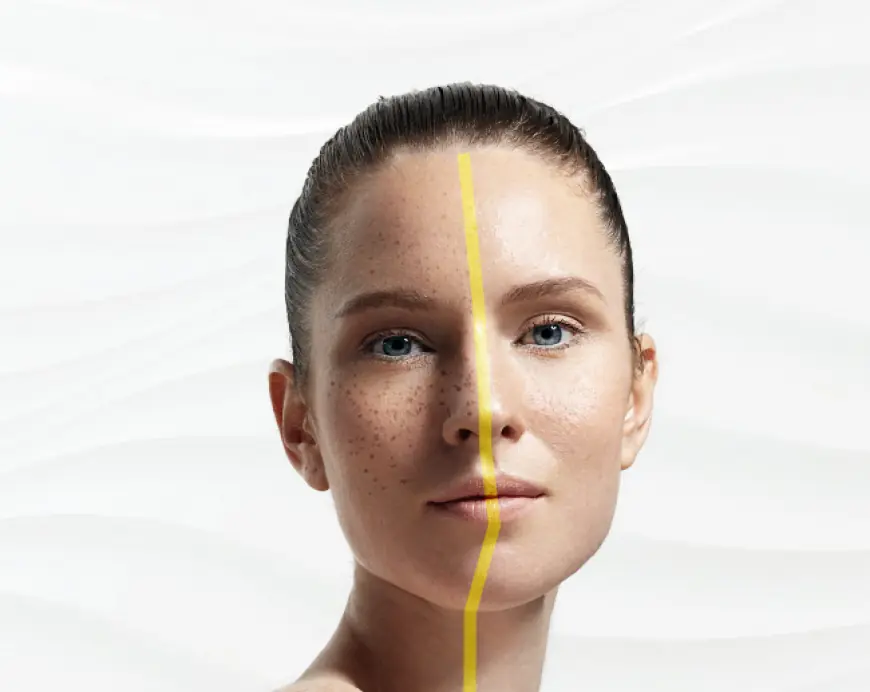Pigmentation Treatment: How Often Should You Get Sessions
Choose skin pigmentation treatment in Dubai. Dynamic Clinic offers a safe and non-surgical treatment for your skin with long-lasting results.

Pigmentation treatments are designed to target uneven skin tone, dark spots, and discoloration caused by factors like sun exposure, hormonal changes, or aging. The frequency of these sessions plays a crucial role in achieving optimal results. Treatments such as laser therapy, chemical peels, and light-based technologies often require a specific schedule to allow the skin to recover and regenerate between sessions. Understanding the right timing ensures that the Pigmentation treatment in Dubai works effectively without overwhelming the skin or causing irritation.
Factors Influencing Session Intervals:
The ideal gap between Pigmentation treatment in Dubai (علاج التصبغات في دبي) sessions can vary depending on several factors. The type of pigmentation—whether it is sun-induced, hormonal, or post-inflammatory—determines how aggressively it can be treated. Additionally, the chosen method influences the timeline; for instance, laser sessions often require more downtime compared to lighter chemical peels. Skin type, sensitivity, and the extent of discoloration also play a role. People with sensitive skin may need longer recovery periods, while those with resilient skin might tolerate shorter intervals.
Typical Treatment Schedules:
While there is no universal rule, many pigmentation treatment plans follow a consistent pattern to maximize results. For instance, light chemical peels may be performed every 2–4 weeks, while intense pulsed light (IPL) or laser sessions are often spaced 4–6 weeks apart. This interval allows the skin to heal, encourages collagen production, and ensures that pigmentation gradually fades without overloading the skin. Regularity is key, but over-treatment should be avoided as it can lead to skin sensitivity or other side effects.
The Importance of Skin Recovery Time:
One of the main reasons for spacing pigmentation treatment sessions is to give the skin enough time to repair itself. Pigmentation procedures often cause controlled damage to the skin to stimulate new cell turnover and reduce melanin buildup. If treatments are done too frequently, the skin may not have enough time to rebuild its protective barrier, increasing the risk of redness, irritation, or even hyperpigmentation. Allowing adequate healing time helps maintain skin health while steadily improving its appearance.
Adjusting Frequency Based on Progress:
Not all pigmentation fades at the same rate, and adjustments may be necessary based on individual progress. Some people notice visible improvement after just a few sessions, while others may require a longer course of treatments. As pigmentation lightens, the intervals between sessions can often be extended to maintain results rather than intensively targeting the spots. This flexible approach prevents unnecessary treatments and supports long-term skin balance.
Seasonal Considerations for Scheduling:
The time of year can also influence how often you should schedule pigmentation treatments. Many procedures make the skin more sensitive to sunlight, so they are often planned more frequently during cooler months when sun exposure is lower. During summer, longer intervals may be necessary to reduce the risk of sun-related pigmentation returning. Using high-quality sunscreen between sessions is essential to protect results and prevent new discoloration from forming.
Maintenance Sessions for Long-Term Results:
Even after the main course of pigmentation treatments is completed, occasional maintenance sessions can help preserve results. Pigmentation can return due to aging, hormonal shifts, or sun exposure, so maintenance treatments—perhaps every few months or once or twice a year—can keep the skin clear and even-toned. These sessions are typically less frequent and less intensive than the initial treatment plan, focusing on prevention rather than correction.
Listening to Your Skin’s Needs:
Ultimately, the right frequency for pigmentation treatment sessions depends on how your skin responds. Overly frequent treatments can do more harm than good, while waiting too long between sessions may slow progress. By paying attention to your skin’s condition and adapting the schedule when necessary, you can achieve the best possible balance between safety and effectiveness. Combined with proper skincare, sun protection, and healthy lifestyle choices, an appropriately timed treatment plan can lead to long-lasting improvements in skin clarity and brightness.
Conclusion:
Determining how often to undergo Pigmentation treatment in Dubai (تصبغ) sessions is a balance between achieving visible results and allowing the skin enough time to recover. While general guidelines suggest intervals of a few weeks between sessions, the exact timing depends on the treatment type, skin condition, and individual healing capacity. By following a consistent schedule, adjusting based on progress, and protecting the skin from sun damage, you can maximize the benefits of your pigmentation treatments. With the right frequency and proper aftercare, clearer, more even-toned skin can be maintained for the long term, helping you enjoy a healthy and radiant complexion.
What's Your Reaction?
 Like
0
Like
0
 Dislike
0
Dislike
0
 Love
0
Love
0
 Funny
0
Funny
0
 Angry
0
Angry
0
 Sad
0
Sad
0
 Wow
0
Wow
0
















































